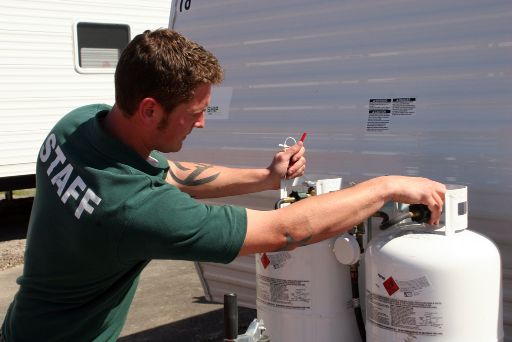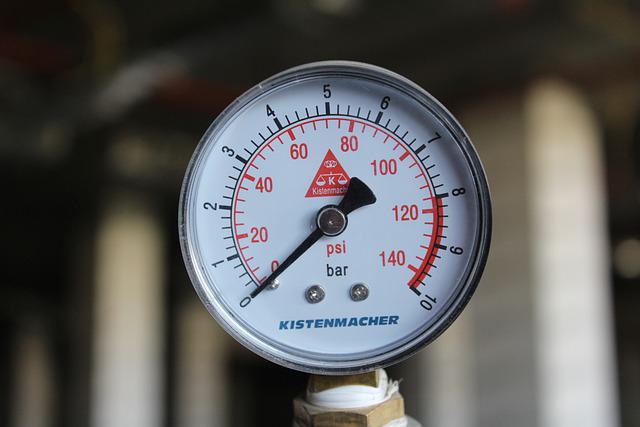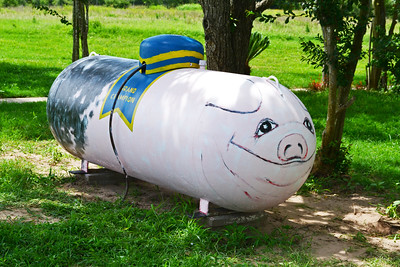
How far can you smoke from a propane tank and can you vape, these are the most common questions we hear from our readers. In this article, we will be giving some insights on this matter. Please read on..
There are many factors to consider when deciding how far to smoke from a propane tank. The most important factor is the size of the propane tank.
- 100-pound propane tank: minimum distance from any source of ignition is 5 feet
- 100-gallon tank: minimum distance from any source of ignition is 10 feet
- 500-gallon tank: minimum distance from any source of ignition is 10 feet
- 1000-gallon tank: minimum distance from any source of ignition is 10 feet
You might be wondering how far you can smoke from a propane tank. The answer isn’t as simple as you might think. It all depends on the size of it, the wind speed and direction, and the type of tank.
The wind can also play a big role in how far propane vapors will travel. If there’s a light breeze blowing in the right direction, the vapors could easily travel several hundred feet from the tank before dissipating into the air. But if the wind is blowing away, the vapors might only travel a few feet before they’re dispersed.
So, as you can see, there are a lot of factors to consider when trying to determine how far you can safely smoke from a tank. The best advice is to err on the side of caution and stay at least 50 feet (15 meters) away from any tank, regardless of its size or the direction of the wind.
Smoking around a propane tank is not recommended. Propane is a highly combustible gas, and if it ignites, it can cause an explosion. If you must smoke, make sure to keep your cigarette as far away as possible from the tank.
Risks of Smoking Near Propane Tanks
Smoking around propane tanks poses significant dangers due to the highly flammable nature of propane gas. Understanding these risks is crucial for maintaining safety in areas where tanks are present.
Fire and Explosion Hazards
- Ignition of Propane Gas: Propane is a highly flammable hydrocarbon gas. When propane leaks from a tank, it can form a combustible mixture with air. The heat from a cigarette or other smoking materials can ignite this mixture, leading to fires or explosions.
- Lower Explosive Limit (LEL): Propane gas has a relatively low LEL, meaning only a small concentration of gas in the air (about 2.1% by volume) is needed for it to become explosive. A lit cigarette can easily provide the ignition source for this concentration.
- Vapor Density: Propane is heavier than air, causing it to accumulate at ground level. This can create invisible pockets of gas that can be ignited by smoking materials, even if the smoker is not in immediate proximity to the tank.
Case Studies and Accidents
- Industrial Accidents: There have been instances in industrial settings where workers smoking near propane storage areas have caused explosions. For example, a worker smoking near a propane tank at a construction site might inadvertently ignite a leak, leading to catastrophic consequences.
- Residential Incidents: In residential areas, smoking around propane tanks used for home heating or grilling can also lead to accidents. Cases have been reported where individuals smoking near a propane BBQ grill caused an explosion, leading to injuries and property damage.
- Gas Station Fires: Gas stations, which often store propane, have experienced fires and explosions due to customers smoking near tank refilling areas. These incidents highlight the extreme danger of smoking near propane, even in open, well-ventilated spaces.
Lessons Learned
These case studies underscore the importance of strict adherence to safety guidelines when it comes to smoking near propane tanks. Both in residential and commercial settings, understanding the risks and maintaining a safe distance can prevent tragic accidents and ensure the safety of individuals and property.
Recommended Safety Distances
When it comes to smoking near propane tanks, maintaining a safe distance is vital for preventing accidents. Safety experts and regulations provide clear guidelines on these distances to minimize the risk of igniting propane gas.
Specific Distance Guidelines
- General Recommendation: As a rule of thumb, it is advised to maintain a distance of at least 25 feet (approximately 7.6 meters) when smoking near tanks. This distance may be greater in industrial settings or where larger tanks are stored.
- Regulatory Standards: Some safety regulations, such as those issued by the Occupational Safety and Health Administration (OSHA) or local fire codes, may specify different distances based on the size of the tank and the setting (industrial, commercial, residential).
- Company Policies: Many companies have their own safety protocols that exceed the minimum regulatory requirements. These policies often dictate a no-smoking zone around propane storage areas, with clear signage indicating the safe distance.
Rationale Behind These Distances
- Dilution of Gas Concentrations: The recommended distance is based on the principle that any potential propane leak would be sufficiently diluted by air at this distance, reducing the risk of reaching a combustible concentration.
- Ignition Source Control: By establishing a safe perimeter, the likelihood of a heat or ignition source (such as a lit cigarette) coming into contact with propane gas is significantly minimized.
- Response Time: In case of a minor leak, a greater distance allows more time for corrective actions to be taken before a potential ignition could occur.
- Safety Margin: These distances also provide a safety margin to account for variables like wind direction, which can carry propane gas beyond the immediate vicinity of the tank.
It is important to note that these distances are minimum recommended distances. In many cases, it is safer to designate specific smoking areas that are well away from any propane storage or handling facilities. Adhering to these guidelines not only ensures compliance with safety regulations but also significantly reduces the risk of fires and explosions.
Code of Federal Regulations Has Minimum Requirement on this Topic
The Code of Federal Regulations (CFR) is the codification of the general and permanent rules published in the Federal Register by the executive departments and agencies of the Federal Government. The CFR is divided into 50 titles that represent broad areas subject to Federal regulation.
One of the title states: “§ 98.30-10 Smoking. – No person may smoke within 50 feet of a portable tank or intermediate bulk container (IBC) on the deck on which the tank is stowed.”
The CFR is published by the Office of the Federal Register (OFR) and is available online. The CFR is updated once a year on October 1st and becomes effective on January 1st of each year. The OFR also issues updates throughout the year in the form of supplements to keep the CFR current.
Will a Cigarette Ignite Propane?
When it comes to potential safety hazards in the home, there are a lot of things to be aware of. One potential hazard that you might not think about is smoking near propane. If you’re wondering whether or not a cigarette can ignite propane, the answer is yes – it’s possible.
When a cigarette is lit, the heat of the burning tobacco ignites the paper. This combustion then creates hot gases that travel up through the tobacco and out of the lit end of the cigarette. These hot gases are what ignite propane when it is present. A cigarette can ignite propane. But it’s not just the heat of the burning tobacco that’s doing the job. The hot gases created by combustion are what actually cause the propane to catch fire.
Propane is a highly flammable gas, and when it’s mixed with air, it can create an explosive mixture. When a cigarette is lit, the heat from the burning tobacco can easily ignite propane gas. This can cause a dangerous explosion, which can lead to serious injuries or even death.
So if you’re using propane in your home, make sure to keep cigarettes away from the area. It’s also important to be aware of any potential leaks, as these can also lead to explosions. By following these simple safety tips, you can help keep your home safe from propane-related accidents.
When Filling the Propane Tank, Don’t Smoke
There are many dangers that come with smoking cigarettes, and one of them is the risk of causing an explosion. Propane is a highly flammable gas, and when combined with an open flame from a cigarette, it can create a dangerous situation. If you are filling a propane tank, make sure to put out your cigarette before doing so.
If you are filling a tank, do not light a cigarette. Propane is highly flammable, and cigarettes can easily ignite the gas. If you must smoke, step away from the tank and make sure there are no open flames nearby.
A little gust of air carrying vapor in the direction of an open flame, in this case a lit cigarette, can easily ignite the gas causing untoward incidents.
Can You Vape Next to a Propane Tank?
If you are using a refillable propane tank, then you need to be more careful. Refillable tanks can release small amounts of gas when they are being refilled. This gas is flammable, and if there is a spark or an open flame nearby, it could cause an explosion. So, if you are going to vape next to a refillable tank, make sure that there is no open flame nearby.
Vaping next to a propane tank is not advisable because it poses similar risks to smoking cigarettes in the same vicinity. Here’s why:
- Ignition Risk: Vaporizers and e-cigarettes, like traditional cigarettes, have electrical components and heating elements that can generate sparks or heat. These can ignite propane gas if there’s a leak nearby.
- Propane Leaks: Propane is a highly flammable gas that can leak from tanks, even in small amounts. If this gas comes into contact with a heat source or spark from a vaping device, it could lead to a fire or explosion.
- Safety Regulations: Safety guidelines and regulations that apply to smoking near tanks also extend to vaping, given the similar risks involved.
- Invisible Danger: Propane gas is odorless in its natural state, although an odorant is added for detectability. You might not be aware of a propane leak until it’s too late, especially if vaping masks the smell.
- General Caution: For overall safety, it’s best to treat vaping with the same caution as smoking around flammable materials like propane.
It’s probably best to err on the side of caution and not vape next to a tank. There’s always a risk of igniting the propane gas when using any kind of open flame near a tank, so it’s best to avoid vape pens and other devices that use an open flame. If you must use an open flame device, make sure that the tank is well-ventilated so that any sparks or flames will be quickly diluted and extinguished.
A Lit Cigarette is an Ignition Source
Smoking cigarettes is a major ignition source for residential fires. In fact, according to the National Fire Protection Association (NFPA), smoking materials are the leading cause of home fire deaths in the United States. Smoking cigarettes inside your home greatly increases your risk of starting a fire.
If you smoke, it’s important to take precautions to prevent a cigarette from igniting a fire. Here are some tips from the NFPA on how to prevent smoking-related fires in your home:
-Never smoke in bed. -If you must smoke inside, choose a well-ventilated area away from anything that can burn, such as upholstered furniture, drapes, or bedding. -Use deep, sturdy ashtrays. -Never throw lit cigarettes into the trashcan. -Soak cigarette butts and ashes in water before throwing them away. -Don’t let anyone smoke around medical oxygen. -If you smoke outside, be careful not to drop lit cigarettes on mulch or pine needles.
Do Not Smoke Near a Propane Tank At Any Time
Smoking around flammable substances can be extremely dangerous, as it increases the risk of fire or explosion. This is especially true if there is a gas leak and gas has accumulated in an area.
When gas is present in the air, it is highly flammable. If a pocket of gas accumulates in an area, it can be ignited by a spark or flame, such as the one produced by a cigarette. This can lead to a fire or an explosion, which can cause serious injury or death.
The whole idea behind not smoking around flammable substances is to reduce the risk of this type of accident. If you are in an area where gas may be present, it is important to avoid smoking or using any other open flame, such as a lighter or a candle.
In addition to not smoking around flammable substances, there are other steps you can take to reduce the risk of fire or explosion:
- Be aware of the location of gas lines and appliances in your home or workplace.
- Make sure that gas appliances are properly installed and maintained.
- If you smell gas, leave the area immediately and call the gas company or the fire department.
- Install and maintain smoke and carbon monoxide detectors in your home or workplace.
By taking these precautions and being aware of the dangers of smoking around flammable substances, you can help to keep yourself and those around you safe. Remember, it is always better to be safe than sorry when it comes to the risk of fire or explosion. So, it is always better to avoid smoking around flammable substances.
If You See A “No Smoking” Sign Near a Tank, Follow It
If you see a “No Smoking” sign near a tank, it’s important to follow it. These signs are placed for safety reasons, as the area around the tank could be at risk of fire or explosion if exposed to a flame or spark from smoking.
The presence of such sign indicates that there are flammable materials, like propane or other gases, stored in the tank. These substances can be easily ignited by a small spark or the heat from a cigarette, vape, or any smoking material. Ignoring these signs not only endangers your safety but also that of others around you.
Always respect and adhere to the signs, especially near tanks, to prevent potential hazards and ensure the safety of everyone in the vicinity.
Safety Tips and Best Practices for Smoking Near Propane Tanks
1. Designate Smoking Areas
- Implementation: Clearly mark designated smoking areas with signs. These areas should be far enough from propane storage to prevent any risk of ignition.
- Facilities: Equip these areas with fireproof ashtrays or receptacles to ensure cigarette butts are disposed of safely and cannot ignite nearby materials.
2. Follow No-Smoking Signs
- Awareness: Understand that no-smoking signs are placed strategically to prevent fire risks. Respect these signs as they are a key part of safety protocols.
- Responsibility: If you’re in charge of a site, ensure no-smoking signs are visible and inform all personnel and visitors about the importance of adhering to these signs.
3. Educate and Train
- Workplace Safety: Conduct regular safety training sessions that cover the risks associated with smoking near propane tanks.
- Family Safety: At home, educate family members, especially if propane tanks are used for heating or cooking.
4. Regularly Inspect Propane Areas
- Inspection Routine: Create a routine for inspecting propane tanks and related equipment for leaks or damages.
- Professional Checks: Have a professional check these systems periodically to ensure they are in good condition.
5. Emergency Preparedness
- Plan Development: Develop an emergency plan that includes evacuation routes and meeting points.
- Equipment Maintenance: Regularly check the condition of fire extinguishers and other emergency response tools.
6. Proper Disposal of Smoking Materials
- Extinguishing Cigarettes: Make sure cigarettes are fully extinguished in an ashtray or a bucket of sand.
- Disposal: Dispose of extinguished smoking materials in a covered, non-combustible container.
7. Maintain a Clean Environment
- Housekeeping: Regularly clear the area around propane tanks of any waste, dry leaves, or other combustible materials.
- Storage Practices: Store flammable materials well away from propane tanks and designated smoking areas.
8. Be Vigilant
- Monitoring: Keep an eye out for individuals smoking in prohibited areas and politely remind them of the risks and safety protocols.
- Enforcement: If you are responsible for a site, enforce smoking rules consistently for the safety of everyone.
To Make a Conclusion
If you’re using a propane tank to power your home, it’s important to be aware of the dangers of smoking near it. Propane is a highly flammable gas, and if there’s a leak in the tank or a build-up of gas around it, smoking near the propane tank could cause an explosion.
In addition to the risk of explosion, smoking can also lead to asphyxiation. Propane is heavier than air, so if there’s a propane leak, the gas can sink to the ground and fill up an enclosed space quickly. If you’re smoking and you start to feel dizzy or lightheaded, it’s important to get out of the area immediately and get some fresh air.
It is dangerous to smoke near the propane tank because propane is a flammable gas. If there is a fire near it, the tank could explode and cause serious injury or death.

Mike is an experienced propane technician with over 15 years of professional experience in the field. He has dedicated his career to helping customers with their propane needs, from installation to maintenance and repair. Together with Jeremy, he co-founded this website to provide useful information and guidance to customers seeking reliable propane services.




